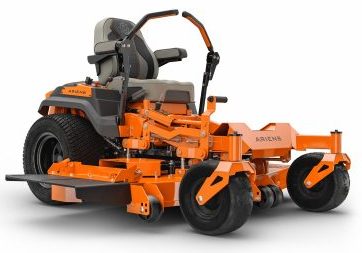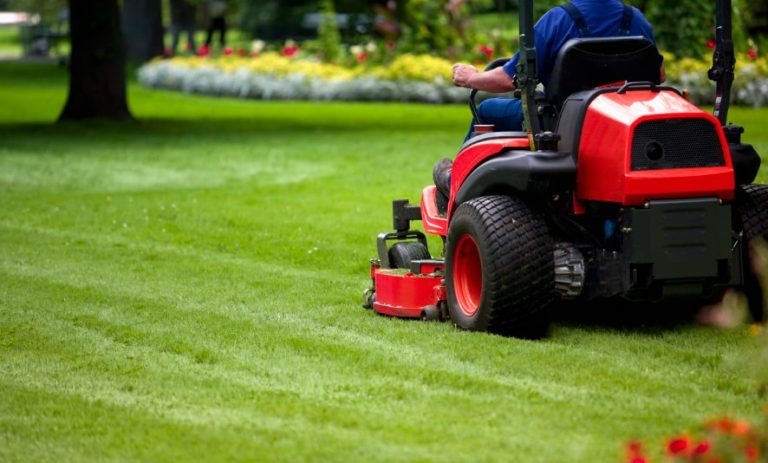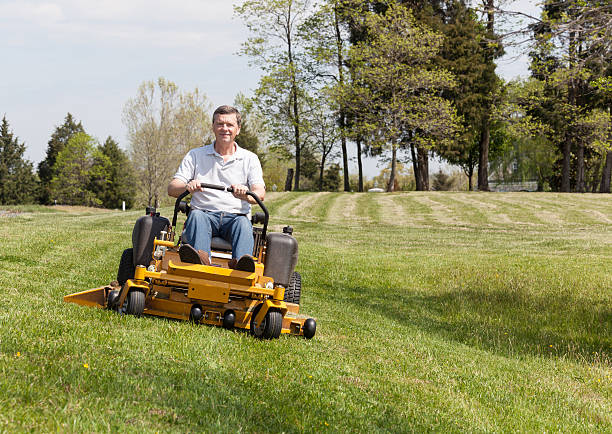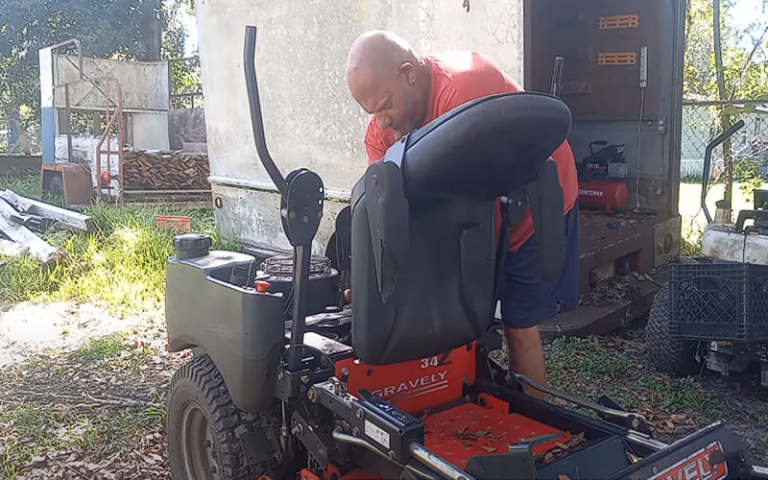Mastering Your Lawn: How to Drive a Zero-Turn Mower
Zero-turn mowers have revolutionized lawn care, offering unparalleled maneuverability and efficiency. Whether you’re a homeowner looking to maintain your lawn or a professional landscaper, learning how to drive a zero-turn mower can save you time and give you a beautifully manicured lawn. This guide will walk you through everything you need to know, from the basics to advanced tips, ensuring you’re equipped to handle your zero-turn mower like a pro.
What is a Zero-Turn Mower?

Before diving into the mechanics of driving one, let’s first understand what a zero-turn mower is. Unlike traditional riding mowers, zero-turn mowers are designed to pivot around their axis. This means they can turn in place, offering a “zero” turning radius, hence the name. This unique feature makes them incredibly efficient for mowing large areas with obstacles like trees, flower beds, and fences.
Why Choose a Zero-Turn Mower?
Zero-turn mowers are popular for several reasons:
- Efficiency: They cut mowing time significantly due to their speed and maneuverability.
- Precision: The zero-turn capability allows for precise mowing around obstacles.
- Comfort: Many models come with ergonomic seating and controls, reducing operator fatigue.
- Versatility: Suitable for various terrains, from flat lawns to hilly landscapes.
If you want to understand more about lawn mowers, read our detailed analysis of the 8 Best Zero Turn Mowers for Hills Here.
Getting Started: Understanding the Controls
Before you start mowing, it’s essential to familiarize yourself with the controls of your zero-turn mower. Unlike traditional mowers that use a steering wheel, zero-turn mowers are controlled using two levers or lap bars. Here’s a quick rundown:
- Lap Bars/Control Levers: These control the speed and direction of the mower. Pushing both levers forward moves the mower straight ahead, pulling them back reverses, and moving one lever forward while pulling the other back allows the mower to pivot.
- Throttle: Controls the engine speed. Higher throttle settings are used for mowing, while lower settings are for idling.
- Blade Engagement: A switch or lever that engages the mower blades. Ensure the blades are disengaged when starting the mower or when you’re not actively mowing.
- Parking Brake: Always engage the parking brake before starting the mower and when leaving it unattended.
Step-by-Step Guide to Driving a Zero-Turn Mower
1. Safety First
Before you begin, safety should be your top priority. Wear appropriate clothing, including sturdy shoes, gloves, and eye protection. Ensure the mowing area is clear of debris, children, and pets. It’s also advisable to read the owner’s manual specific to your model, as controls and features may vary.
2. Start the Mower
- Sit on the mower seat and ensure the parking brake is engaged.
- Set the throttle to a low setting.
- Turn the key to start the engine. If your mower has a choke, engage it if needed, and then release it once the engine is running smoothly.
- Allow the engine to warm up for a few minutes before increasing the throttle.
3. Familiarize Yourself with the Controls

- With the engine running, disengage the parking brake.
- Gently push the control levers forward to start moving. Begin with slow, deliberate movements to get a feel for the mower’s response.
- Practice turning by moving one lever forward and the other back. This will cause the mower to pivot, allowing you to make tight turns around obstacles.
4. Adjusting Speed
- As you gain confidence, gradually increase the throttle to the desired mowing speed.
- Zero-turn mowers can move quickly, so it’s essential to find a speed that allows for precise control, especially when mowing near obstacles.
5. Engaging the Blades

- Once you’re comfortable with the mower’s movement, it’s time to start mowing.
- Move the throttle to the highest setting for optimal blade speed.
- Engage the blades using the switch or lever. You should hear the blades start spinning.
- Begin mowing, maintaining a consistent speed for an even cut.
6. Maneuvering Around Obstacles
- One of the main advantages of a zero-turn mower is its ability to maneuver around obstacles with ease.
- When approaching an obstacle, reduce your speed for better control.
- Use the pivoting capability to mow around trees, flower beds, and other obstacles without leaving uncut grass.
7. Mowing on Slopes
- Mowing on slopes requires extra caution. Zero-turn mowers are best suited for flat terrain, but they can handle gentle slopes if driven correctly.
- Always mow up and down slopes, not across, to reduce the risk of tipping.
- Keep your speed low and avoid making sharp turns on slopes.
8. Finishing Up
- Once you’ve finished mowing, disengage the blades and reduce the throttle.
- Drive the mower to a flat, safe area and engage the parking brake.
- Turn off the engine and remove the key.
- Clean the mower deck and blades to remove any grass clippings and debris, which can affect performance and longevity.
Maintenance Tips for Your Zero-Turn Mower
To keep your zero-turn mower in top condition, regular maintenance is crucial. Here are some essential tips:
- Check the Oil: Regularly check the engine oil level and top up if necessary. Change the oil according to the manufacturer’s recommendations.
- Clean the Air Filter: A clogged air filter can reduce engine efficiency. Clean or replace it as needed.
- Sharpen the Blades: Dull blades can tear the grass rather than cutting it cleanly. Sharpen the blades regularly to ensure a smooth, even cut.
- Inspect the Tires: Ensure the tires are properly inflated. Uneven tire pressure can affect the mower’s balance and cutting performance.
- Store Properly: When not in use, store your mower in a dry, sheltered area to protect it from the elements.
Troubleshooting Common Issues
Even with proper maintenance, you may encounter some issues with your zero-turn mower. Here are a few common problems and how to address them:
- Mower Won’t Start: Check the battery, spark plug, and fuel levels. Ensure the safety features, like the parking brake and seat switch, are engaged.
- Uneven Cutting: This can be caused by dull blades, uneven tire pressure, or an uneven mower deck. Sharpen the blades, check the tire pressure, and level the deck.
- Poor Maneuverability: If the mower is not responding well to the controls, check the hydraulic fluid levels and ensure the control levers are properly adjusted.
Conclusion
Learning how to drive a zero-turn mower may seem daunting at first, but with practice, you’ll be able to navigate your lawn with ease and precision. By following this guide, you’ll not only become proficient in handling your zero-turn mower but also ensure your lawn is consistently well-maintained.
Investing time in learning and maintaining your mower will pay off with a beautiful, neatly trimmed lawn and a machine that will serve you well for years to come. Whether you’re a novice or a seasoned pro, the key to successful mowing lies in understanding your equipment and practicing regularly. Happy mowing!

Michael Anderson is a lawn care professional with many years of experience in the industry. His journey began in his family’s landscaping business, where he developed a passion for gardening and outdoor maintenance. Michael specializes in helping homeowners tackle challenging terrain, focusing on the best equipment and techniques for effective lawn care.
In 2024, he founded bestzeroturnmowerforhills.com to share his knowledge and help others find the ideal zero turn mower for hilly landscapes. His commitment to providing unbiased reviews and practical advice has made him a trusted resource for gardening enthusiasts.






